Cover your ears. It’s going to get loud, introducing, Oval Track Racing. This high-octane stock car racing library features cars of various makes, models and performance characteristics in nine divisions circling a quarter mile (.40 kilometer) asphalt oval ‘short’ track in Idaho. Pass-bys, overalls and on-boards were captured from multiple perspectives inside, outside, and alongside the track with various microphones and recorders.
Some cars sound like growling Grizzly bears roaring past. Others like a swarm of angry bees, let loose all at once. Backfires sound like giant popcorn on the stove. There are shrieking skids, stunning spinouts, tire screeches, ominous snarls, fender scrapes, and high-pitched whines. On such a tight track, laps add up fast. Acceleration and deceleration are constant with no breathing space except for the occasional spinout.
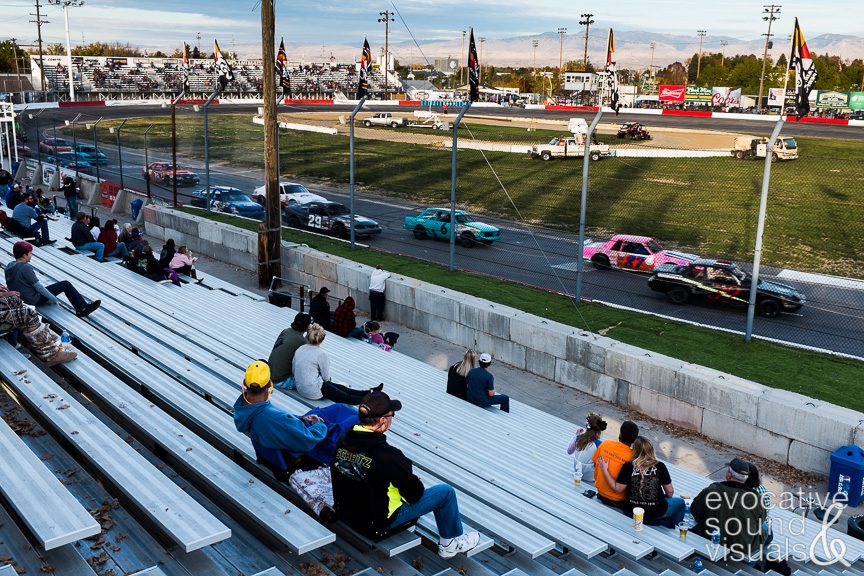
Oval Track Racing features plenty of pass-bys captured right next to concrete retaining walls on straightaways and through turns. To give you options, these pass-bys are broken out in two ways. Use the ‘one shot’ sound files consisting of a single pass-by (thank you Paul V. for this suggestion). Or choose to use the overall race/practice session consisting of multiple laps.
This meticulously crafted library also features a selection of overalls captured from high in the stands, inside the pits, from the center of the infield and outside the gates. For instance, I captured 48 laps (11 minutes worth) of an 85-lap race featuring eight rumbling Big 5 Late Model cars, recorded clean and free of public address announcements, 250 feet (76 meters) outside the ‘bullring.’ The crowd cheers for the winner at the end. Onboard recordings feature the growling sounds of a Street Stock car (1975 Chevrolet Nova), both in the pits and on the track.
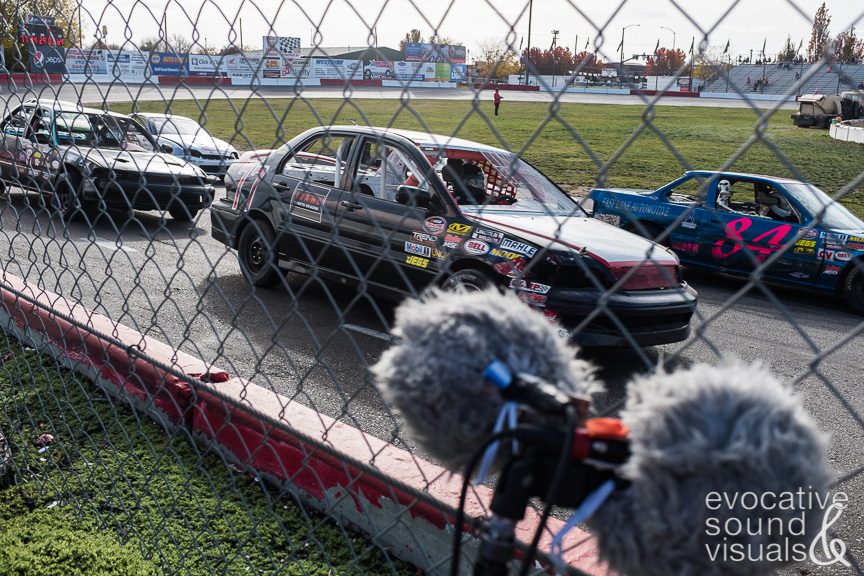
I was granted access to this track over several racing seasons. I was a free-roaming recordist, grateful for the opportunity. Everyone at the track was incredibly kind and helpful. I made it a point to record during practice sessions to avoid announcer commentary. Often, this was with only one car on the track, which is what I had hoped for. It’ll be great for layering and staggering car sounds to create your racing scenes. I captured some races too, of course.
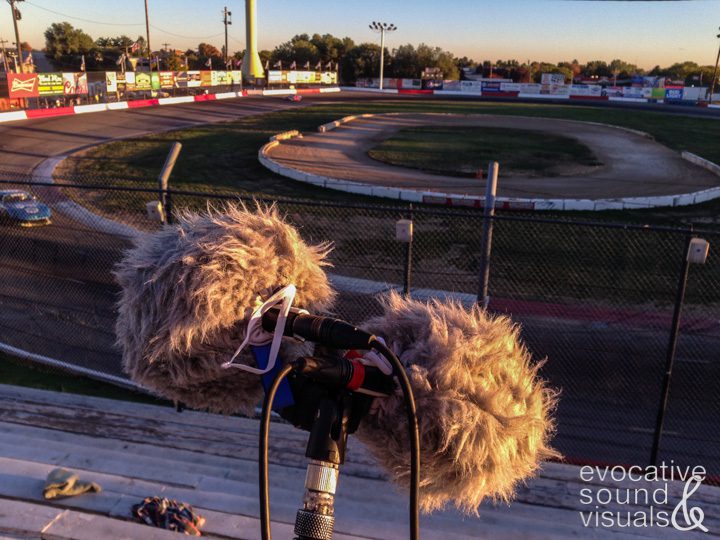
I grew up within earshot of a race car road course. From less than three miles (4.8 kilometers) away, cars blended into one large pot of noise that competed with weekend backyard barbecues and baseball on the radio. It wasn’t until you got close to the track that the sonic distinctions of various engines and tailpipes could be heard. The same can be said for this short oval track. The variety of cars that race here – and there are many – all sound quite different under the hood and to the ear.
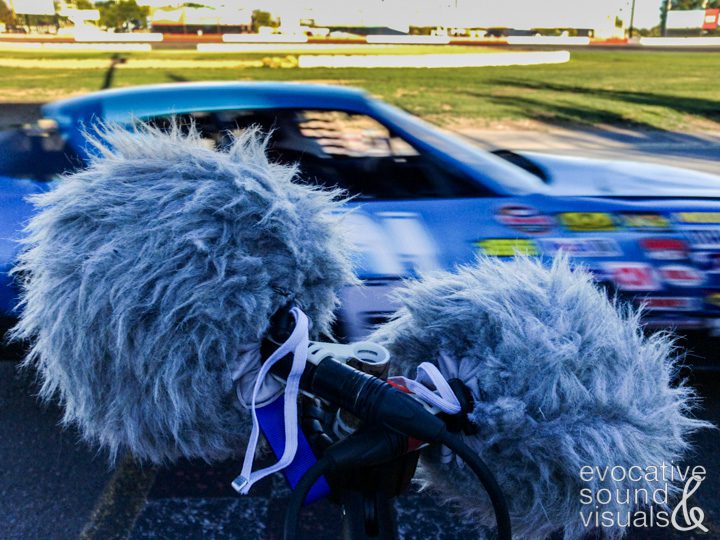
Stock car racing, and its drivers, have come a long way since the early days of running moonshine during Prohibition, and then, in 1948, becoming united under the governing body of the National Association for Stock Car Racing (NASCAR). Create the feel of hard-fought races these drivers experience during the summer months with Oval Track Racing.
Library Technical Details
- 65 files, 141 minutes, 4.95 GB
- Captured with Sound Devices 702 and Sony PCM D100 recorders at 96 kHz/24bit (loudest sounds normalized at -1 dBFS)
- Featuring both racing (with minimal crowd and PA noise) and clean solo practice laps
- Pass-bys and overall ambiances captured at varying distances, plus an onboard perspective
- Pass-bys are additionally broken out into ‘oneshots,’ a quick one-time-only swipe from left to right.
- Metadata included (Soundly/BWF)
- UCS compliant
- PDF Microphone perspective map included
Listen to an Overall Preview
Racing Divisions Captured for the Library
Claimer
Hornet
Hornets are also referred to as Stingers, depending upon the driver’s age group. They average around 115-160 horsepower depending on the car, hitting 45-55 MPH on the track. Any non-turbo four cylinder car is allowed, with examples being 80s-90s-era Toyota Celica, Chevrolet Cavalier, Ford Escort and Focus, Honda Prelude and Civic.
Late Model
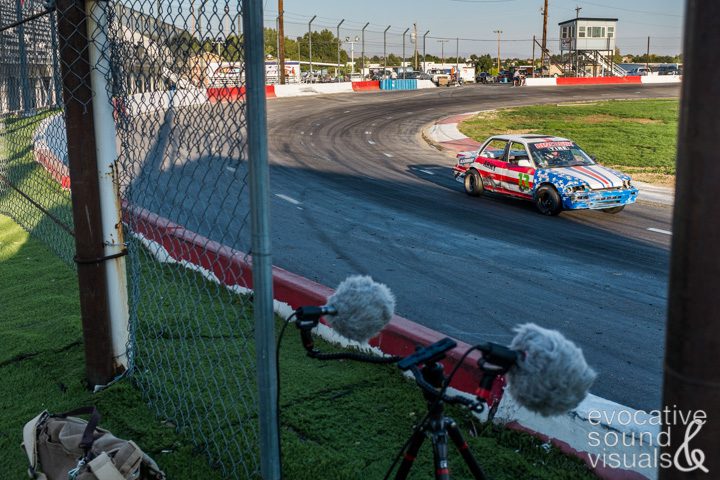
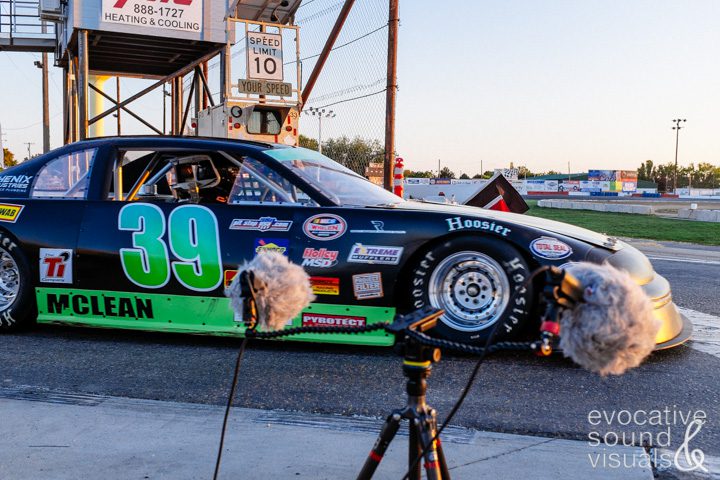
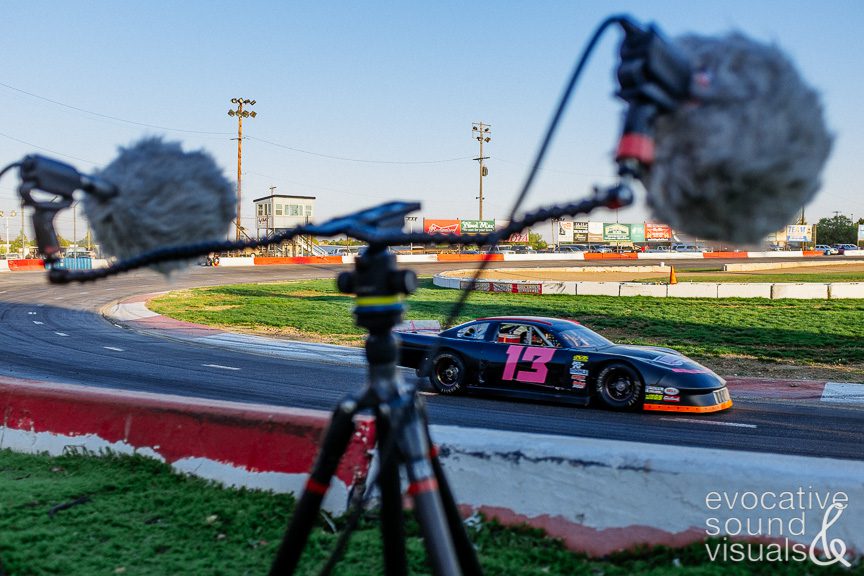
Legend
These 125-horsepower cars feature a fantastic popcorn-sounding muffler backfire as they decelerate into a curve.

Mini Stock
Average horsepower: 175. Top speed: 80 MPH. According to Meridian Speedway, all Mini Stock cars must be four-cylinders models. Common types include Nissan Sentra, Ford Focus, Dodge Neon, Ford Escort, Toyota Celica. 80s and 90s-era models in particular.
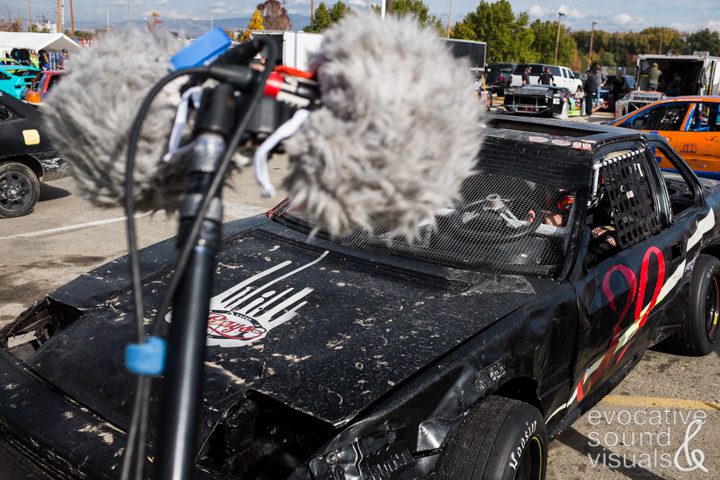
Pro 4
These are four cylinder cars averaging around 16-250 horsepower, with a top speed of 85 MPH (each lap taking approx. 14 seconds).
Speed Tour Modified
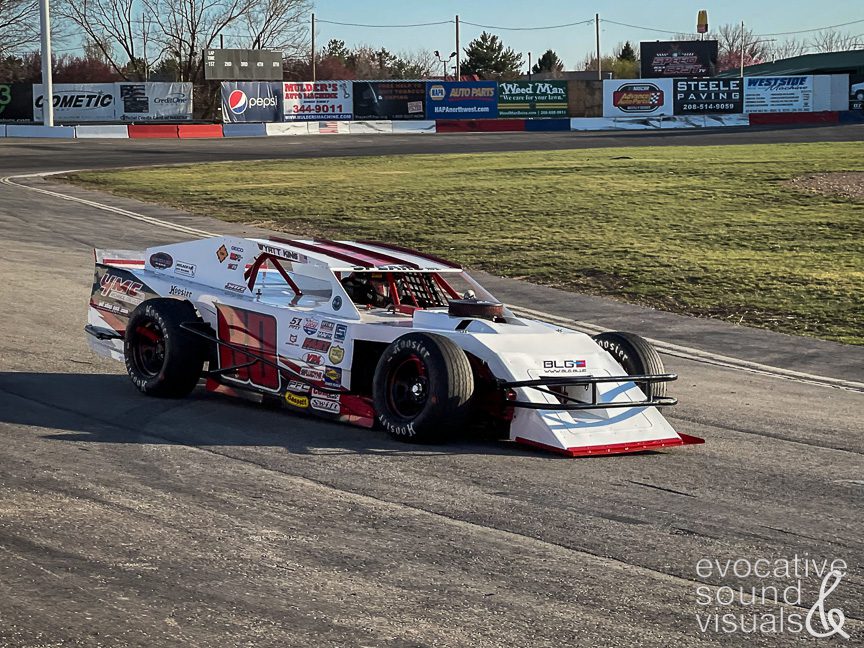
Street Stock
Average horsepower: 375. Top speed: 80 MPH. According to Meridian Speedway, these are 8-cylinder cars. Examples can be 1950 through current day American-made Ford Mustangs, Dodge Chargers, Chevrolet Novas, Pontiac Firebirds, etc.
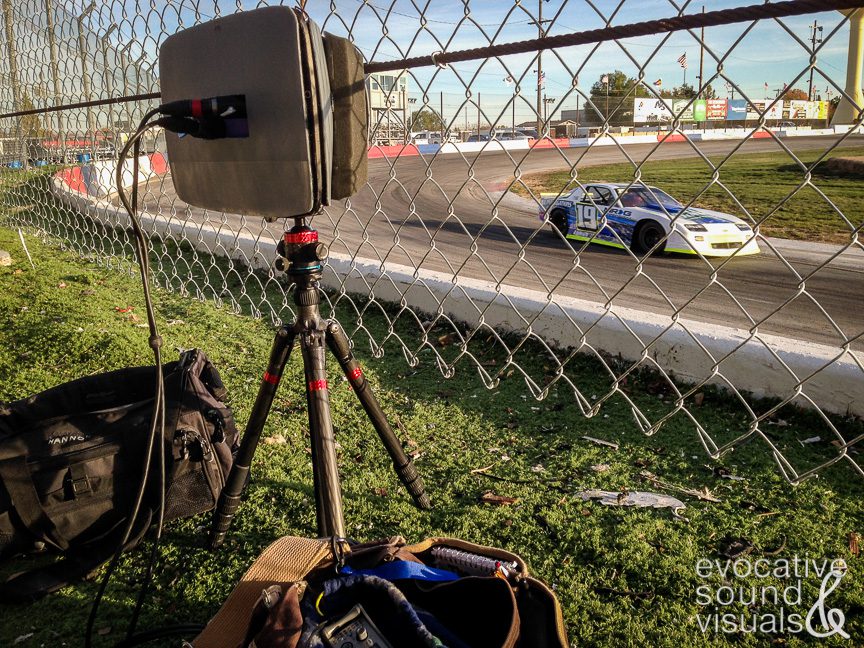
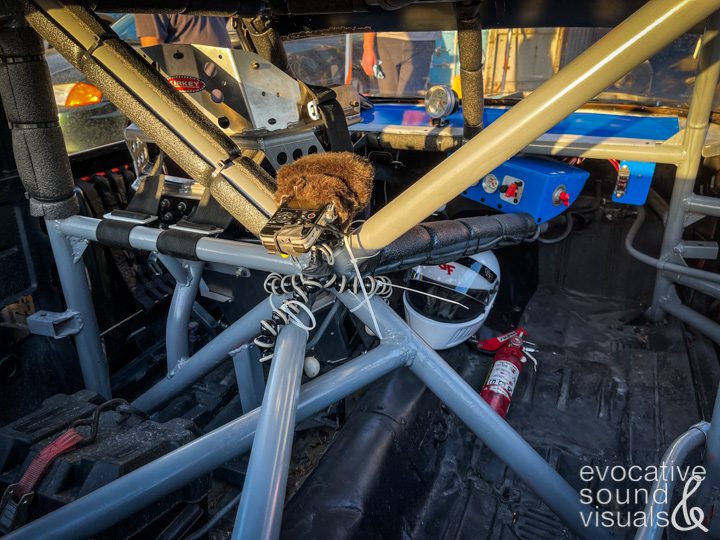
Winged Sprint
These cars, which seem to skid through every turn, voice a low grumbling sound as they pass by with the bonus of a high-pitched whine thrown in. They average 85-100 MPH down the straightaways.
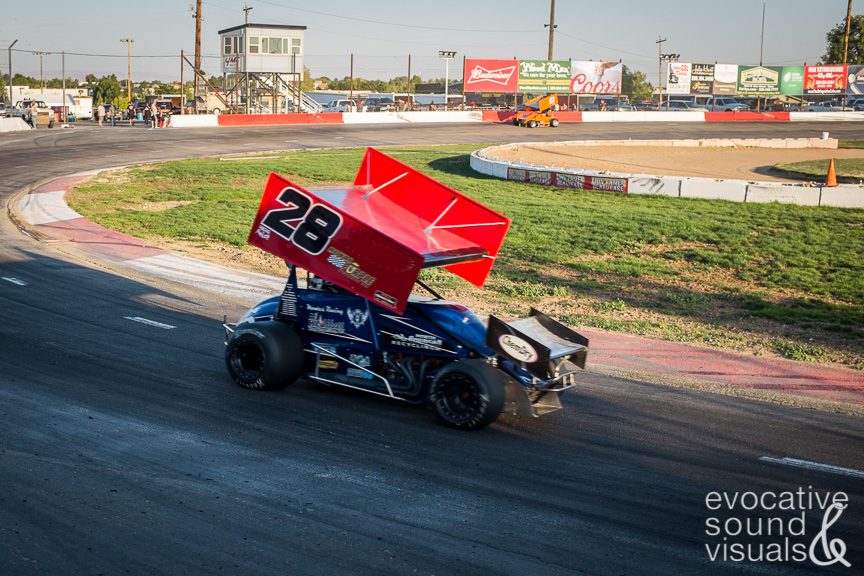
Microphone Perspectives
Illustration above by Evocative Sound and Visuals. Original oval graphic by Majo statt Senf used with changes under Creative Commons Attribution-Share Alike 4.0 International license.
Position A
- 250 feet (76 meters) from turn 3, outside the track
- Recorded eight Big 5 Late Model cars racing 48 laps with no announcer noise
- Sound Devices 702 with a DIY binaural head featuring Clippy EM 172s in each ear
Position B
- 40 feet (12 meters) from the track, top of grandstands between turns 3 and 4
- Recorded Late Model and Legend cars
- Sound Devices 702 and Line Audio CM3 microphones in ORTF
Position C
- 8 feet (2.4 meters) from the track, behind the barrier wall between turns 3 and 4
- Recorded Street Stock, Claimer, Hornet, Modified and Pro Late Model cars
- Sound Devices 702 with Audio Technica 3032 in both AB and DIY SASS
Position D
- 15 feet (4.5 meters) from the track at the entrance to the pits
- recorded Pro Late Model and Mini Stock cars entering the track
- Sound Devices 702 and Audio Technica 3032s in AB and Line Audio CM3 in ORTF
Position E
- Inside the pit area, 130 feet (40 meters) from track
- Onboard a Street Stock car behind the driver’s seat recorded with Sony PCM D100 (built-in mics in wide mode)
- recorded a racing jack rolling around with Sony PCM D100
- recorded Claimers and Mini Stock cars idling, revving and moving with Sound Devices 702 and Line Audio CM3 in ORTF
Position F
- 10 feet (3 meters) from the track behind the retaining wall on the back straight
- recorded Claimer, Legend, Mini Stock and Junior Stinger cars
- Sound Devices 702 and Line Audio CM3 in ORTF
Position G
- Center of track infield
- Recorded Speed Tour Modified and Street Stock cars
- Sound Devices 702 and Audio Technica 3032 microphones in AB
Position H
- 45 feet (14 meters) from track outside wall
- Recorded Junior Stingers racing 10 laps with no announcer noise
- Sound Devices 702 with binaural head with Clippy EM 172s
Position I
- Directly behind the barrier wall at the start/finish line
- recorded straight pass-bys of Claimers and Late Model cars
- Sound Devices 702 and Line Audio CM3 microphones in ORTF
Google satellite image showing Meridian Speedway in downtown Meridian, Idaho.
Further Reading
For an oval track racing novice like myself, I found that navigating through different stock car racing divisions and understanding all their nuances can be a bit overwhelming. These links helped:
- Learn more about modified racing, including Legend cars, here.
- Learn more about Late Model cars here.
- Learn more about Legend cars here, from the makers of the car. Here are its specs.
- Dan Breach kindly allowed me to record at Meridian Speedway. Sadly, he passed away in April 2023. His well-written obituary tells a tale of his love for racing that needs to be shared.

